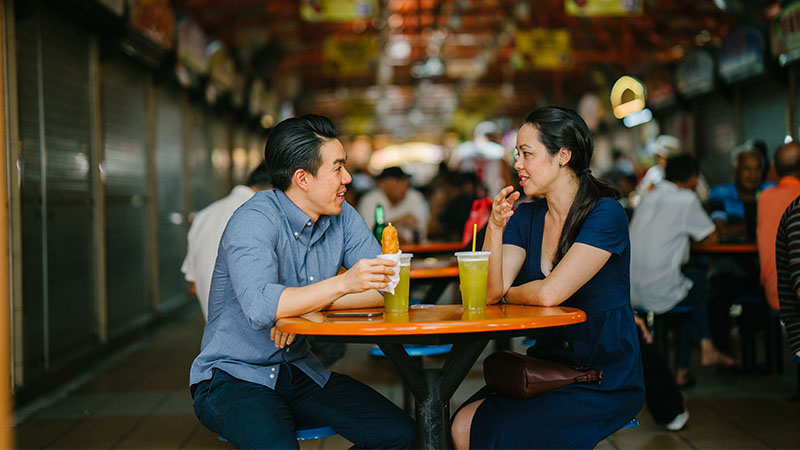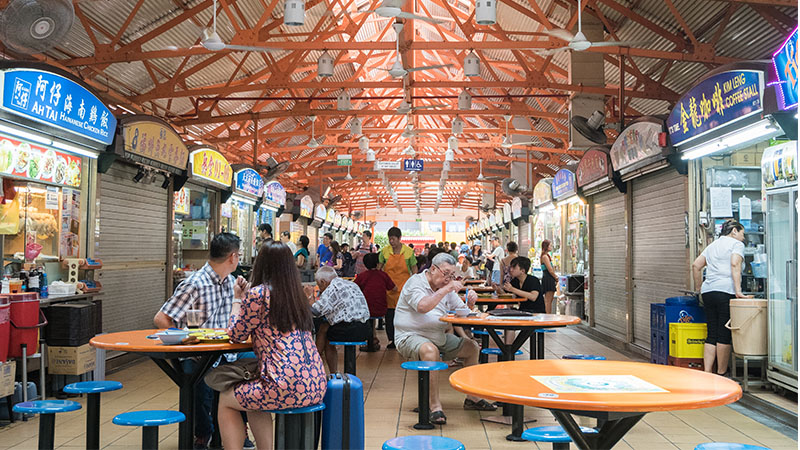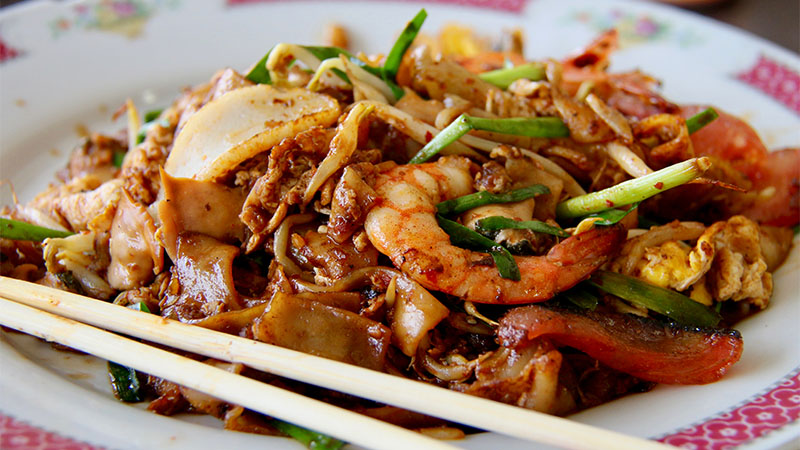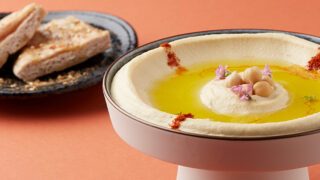Nearly every prominent city has something that it’s universally recognised for: the Opera House in Sydney; the Statue of Liberty in New York; the Eiffel Tower in Paris. But Singapore’s celebrated signature is its food. So, it only makes sense that the home to this nation’s classic cuisine – the hawker centre – is also its most treasured national icon.

Noisy, bustling and unadorned, the hawker centre is a culinary heaven, and still the cornerstone of Singapore’s modern food culture. Walking around a hawker centre is a sensory adventure; a full-body workout sweetened by culinary eye candy, the likes of which you won’t see anywhere else in the world.
The din of happy eaters combines with the clanging of hot woks, the chopping of razor-sharp cleavers and the sizzle of food cooking all around you. This dizzying kaleidoscope of smoke, smells and sounds mixes with the tension in your gut over what to order and the humid wash of sweat on your neck and back.
How it all started
Today there are more than a hundred hawker centres on this island, each with its own identity, look and feel but all offering one-stop eating opportunities for everyone. They’re an anchor for local communities and culture; a principal gathering place for family and friends.
But it wasn’t always that way. From the early 1800s, itinerant cooks roamed the island, clanging bells or smacking wooden blocks with sticks to announce their arrival. They trawled the streets and lanes with pots and woks strapped to bicycles and pushcarts, or balanced on shoulder-poles. They crowded the curbs with makeshift eateries. Scattered all over the island for 12 to 15 hours a day, exposed to the elements, they fed the largely migrant and rapidly growing population.
While this was the norm in a bustling port city that had grown from a fishing village, it became problematic as the country developed apace without providing infrastructure to supporting its massive itinerant food industry. With fresh water in short supply, rudimentary sanitation and no trash removal in abominably overcrowded areas such as Chinatown, waste piled high along curbs and swales. And with every rainfall the waterways were flooded with rotting food, trash, bugs and rats.

None of this sat well with the colonial leadership, which in 1950 proclaimed the island’s hawkers a “disorderly sprawl…in defiance of all order and reason”. A Hawker Inquiry Commission was set up that same year, but little changed in the ensuing couple of decades.
When Singapore gained its independence, the new government also took on the unresolved hawker dilemma. In 1968, a massive licensing and registration effort was implemented to document each hawker and move them from the crowded streets to back alleys and open lots. But many hawkers ignored the new regulations, and by 1973, indiscriminate hawking was still rampant.
An air of change
Now the government took a tough stance. It classified unlicensed hawkers as illegal and set up a Hawker’s Department Special Squad to root out the scofflaws. In the raids on stalls and pushcarts that followed, police confiscated hawkers’ equipment, dumped their food and shut them down. Violent conflicts exploded in the streets between cooks and cops, who abused the vendors by day but ate their food by night; because, they, too, depended on street food to sustain their own families.
Something had to change, because in the proud, blossoming county with lofty goals and global ambitions people still had to eat. And so it was that the hawker centre (or “food centre” to give it its more official – and much more bland! – title) was born.

The idea was simple: create centralised locations for the hawkers. Between 1971 and 1986, the government constructed pavilions following a uniform model: concrete and tile stalls, each with electricity, clean running water and even refrigeration. The conditions were hygienic, with proper trash disposal, drainage and restrooms for all. They built them at housing estates, transportation hubs and places where people regularly gathered. By the time the effort was complete, there were 113 hawker centres across Singapore, housing more than 6,000 food stalls and providing not just a place to eat, but an agora for the nation’s multicultural people.
The modern hawker centre
Today, hawker centres continue to be the kitchens of Singapore, with more Singaporeans eating there than cooking at home. But the tide is slowly turning. Globalisation is changing personal tastes, and the usual fast-food giants are infiltrating the local food culture, replacing it with soulless illusions of progress. At the same time, government subsidies are phasing out and hawker-stall rents are increasing.
As hawkers retire, there are fewer willing to take over the family business, its long hours and hot kitchens. This makes the future uncertain for the nation’s iconic hawker centre and, in turn, the very fabric of Singapore’s incredible culinary culture. Don’t believe it? Just look at Hong Kong.
So, how do we preserve the national treasure that is the Singapore hawker centre? The answer is simple and delicious: get out to one and eat!
5 unusual hawker classics
Everyone who has set foot in a hawker centre knows the “national dishes” like chicken rice and char kway teow. But there are others that you may not know – or shudder at the thought of! Singaporeans have been eating them forever, though, so how bad could they be? Here are five to try next time you wander into tasty-town.
- Kway chap: Pig parts and offal stewed in a dark broth of soy and herbs, and served with rice noodle ribbons, fishcakes, tofu and egg. Hey, don’t knock it till you’ve tried it!
- Sambal skate: Skate wing slathered with belachan chilli paste, grilled on a banana leaf over an open flame and squirted with calamansi (lime juice). Crazy.
- Sup tulang: Mutton bones cooked in a crimson, sweet-hot Indian broth until the meat is tender and the marrow is like butter. Slurp that marrow or spread it on bread. It’s the foie gras of sheep!
- Lontong: Mashed rice cakes simmered with tofu and vegetables in a spicy coconut milk broth. Rich and smooth, it isn’t pretty – but it is tasty.
- Or luak: A batter of oysters, eggs, herbs and starch, deep fried into a brown, crispy-edged “omelette” of just-cooked oyster goodness. Just don’t tell your cardiologist.
10 hawker dishes your kids can try
- Chicken rice
- Kaya toast and eggs
- Popiah
- Roti prata
- Satay
- Wonton noodles
- Fried rice
- Yong tau foo
- Fishball noodles
- Ice kachang
Find more info on these great hawker picks here!
We hope you found this interesting; click here if you’d like to read more.





